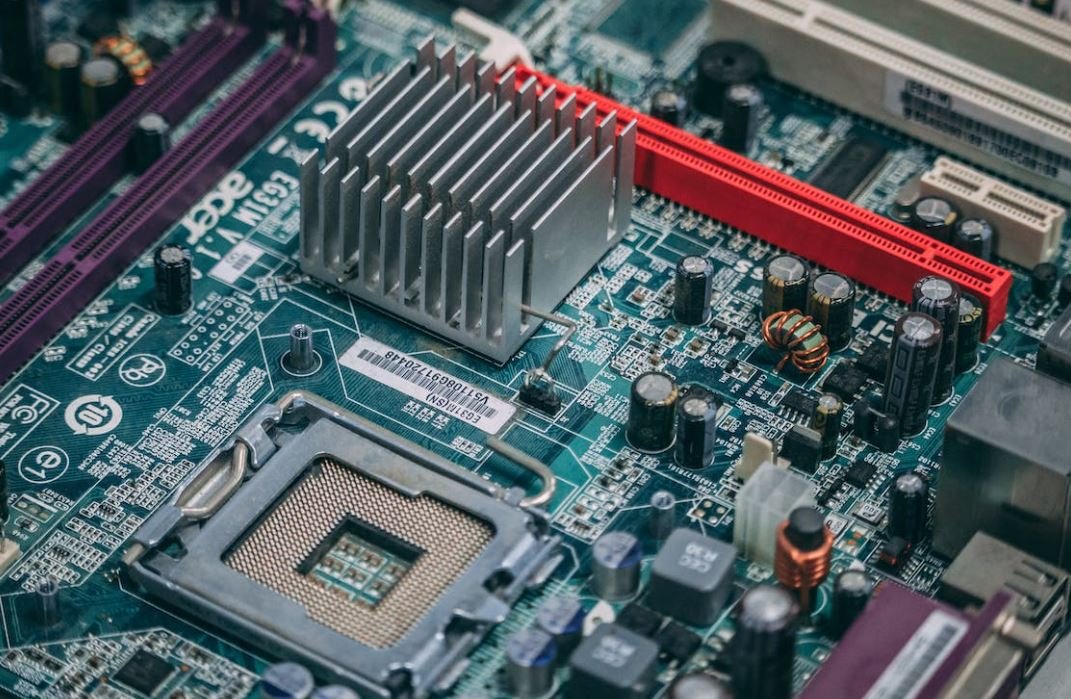SpaceX Yearly Launches
SpaceX, founded by Elon Musk in 2002, has rapidly become a prominent player in the space industry. The company’s goal is to revolutionize space technology and make life multi-planetary. One key aspect of SpaceX’s operations is its yearly launches, which include various missions to deliver satellites, resupply the International Space Station (ISS), and even plan for future Mars missions.
Key Takeaways:
- SpaceX is a leading space technology company founded by Elon Musk.
- The company focuses on revolutionizing space technology and enabling interplanetary travel.
- SpaceX conducts yearly launches for satellite deployment, ISS resupply, and Mars mission planning.
Yearly Launch Statistics
| Year | Number of Launches |
|---|---|
| 2012 | 2 |
| 2013 | 3 |
| 2014 | 6 |
Since its inception, SpaceX has significantly increased its yearly launch cadence. In 2012, the company performed 2 launches, which then grew to 3 launches in 2013, and 6 launches in 2014. This upward trend demonstrates SpaceX’s ability to ramp up its operations and meet the growing demands of its customers in the space industry.
Noteworthy Missions and Achievements
- Dragon’s First Flight to the ISS: In December 2010, SpaceX made history with the successful launch and return of its Dragon spacecraft, becoming the first privately-funded spacecraft to reach the International Space Station.
- Starlink Satellite Constellation: SpaceX’s ongoing Starlink project aims to provide global broadband coverage using a constellation of thousands of small satellites in low Earth orbit, greatly expanding internet accessibility worldwide.
- Transporting Astronauts to the ISS: In 2020, SpaceX’s Crew Dragon became the first crewed spacecraft to be launched from American soil since the retirement of the Space Shuttle in 2011, marking a significant milestone in NASA’s Commercial Crew Program.
Yearly Launch Breakdown
| Year | Successful Launches | Failed Launches |
|---|---|---|
| 2015 | 6 | 1 |
| 2016 | 8 | 0 |
| 2017 | 18 | 2 |
SpaceX’s launch success rate has been consistently impressive. In 2015, the company achieved a successful launch rate of 6 out of 7 attempts, which improved to 8 out of 8 in 2016. In 2017, despite experiencing a couple of failures, SpaceX achieved 18 successful launches out of a total of 20 launch attempts, highlighting the company’s commitment to learning from setbacks and continuously improving its technology.
Future Plans and Ambitions
- Establishing a Martian Colony: SpaceX’s ultimate goal is to colonize Mars and make it a self-sustaining civilization in the future.
- Reusable Rocket Technology: The company has been successful in developing reusable rocket technology, aiming to significantly reduce the cost of space travel and enable more frequent launches.
- Exploring Deep Space: SpaceX plans to use its next-generation spacecraft, Starship, to venture beyond Earth and explore other celestial bodies within our solar system.
Yearly Launch Growth
| Year | Number of Launches |
|---|---|
| 2018 | 21 |
| 2019 | 13 |
| 2020 | 26 |
SpaceX’s growth trajectory continues with remarkable pace. In 2018, the company reached a milestone of 21 successful launches in a single year, followed by 13 launches in 2019. Despite the challenges presented by the global pandemic, SpaceX further increased its annual launch count to a record-breaking 26 launches in 2020, showcasing its commitment to advancing space technology and exploration.
Get Ready for the Next Blastoff!
As SpaceX expands its presence in the space industry, we can expect even more ambitious missions, breakthroughs, and advancements from the company in the coming years. Stay connected and witness the wonders of space exploration unfold!

Common Misconceptions
Paragraph 1: Frequency of SpaceX Yearly Launches
One common misconception about SpaceX yearly launches is that they launch dozens of rockets each year. However, the truth is that SpaceX does not have a fixed number of launches annually. The number of launches varies depending on the mission requirements, customer agreements, and operational constraints.
- SpaceX launches can range from a few to several in a year.
- Launch frequency is influenced by factors like payload readiness and launch site availability.
- Launches are planned strategically rather than having a fixed yearly quota.
Paragraph 2: Reusability of SpaceX Rockets
Another misconception surrounding SpaceX yearly launches is that their rockets are not reusable. Contrary to the belief, SpaceX has successfully pioneered the concept of reusability in the commercial space industry. One of their main goals is to develop fully reusable rockets, reducing the costs associated with space travel.
- SpaceX’s Falcon 9 rockets are reusable, with both the first stage and fairings being recoverable.
- Reusability significantly reduces the cost of launching payloads into space.
- SpaceX has successfully landed and reused Falcon 9 boosters multiple times.
Paragraph 3: SpaceX’s Launch Activities Limited to Satellites
Many people mistakenly believe that SpaceX’s yearly launches solely revolve around satellite deployment. While satellite launches are a significant part of SpaceX’s portfolio, they are not the only focus of their launch activities. SpaceX is involved in various missions, including resupplying the International Space Station (ISS) and launching scientific payloads.
- SpaceX has a long-term partnership with NASA for ISS resupply missions.
- Missions like the Dragon spacecraft deliver cargo and return scientific experiments from the ISS.
- SpaceX has plans to offer crewed missions to the ISS in the near future.
Paragraph 4: SpaceX Launches Exclusively for Commercial Customers
Contrary to popular belief, SpaceX’s yearly launches are not exclusively for commercial customers. While they have a significant number of commercial contracts, SpaceX also works with government agencies and national space organizations. Their partnership with NASA for ISS missions is an example of their involvement in government-led initiatives.
- SpaceX has multiple contracts with NASA for various missions.
- They have also worked with other government entities like the U.S. Air Force.
- SpaceX’s launch services cater to a diverse range of customers, including commercial, government, and international organizations.
Paragraph 5: SpaceX’s Launches Limited to Earth Orbit
One misconception regarding SpaceX’s yearly launches is that they are limited to Earth orbit. While a significant number of their missions do involve launching satellites into orbit around Earth, SpaceX also has ambitions beyond our planet. They are actively involved in the development of their Starship spacecraft, which aims to enable travel to destinations such as Mars and the Moon.
- SpaceX’s Starship is designed for interplanetary travel.
- They have plans to establish a self-sustaining colony on Mars.
- SpaceX’s long-term vision includes utilizing their rockets for human colonization of other celestial bodies.

SpaceX Launch Sites
SpaceX operates several launch sites around the world from which it conducts its rocket launches. These sites are strategically chosen for their proximity to the target orbits and their capacity to support SpaceX’s space exploration goals.
| Launch Site | Location | First Launch |
|---|---|---|
| Cape Canaveral Space Force Station | Florida, USA | 2010 |
| Vandenberg Space Force Base | California, USA | 2013 |
| Kennedy Space Center | Florida, USA | 1967 |
| Brownsville Spaceport | Texas, USA | pending |
| Satish Dhawan Space Centre | Andhra Pradesh, India | pending |
SpaceX Rocket Types
SpaceX has developed various rocket models to fulfill its mission of providing reliable and cost-effective access to space. Each rocket possesses different capabilities, allowing the company to meet the diverse needs of its customers.
| Rocket | Height (m) | Diameter (m) | Payload to Low Earth Orbit (LEO) (kg) |
|---|---|---|---|
| Falcon 1 | 22.25 | 1.68 | 670 |
| Falcon 9 | 70 | 3.7 | 22,800 |
| Falcon Heavy | 70 | 12.2 | 63,800 |
| Starship | 50 | 9 | 100,000+ |
SpaceX Reusable Rockets
SpaceX has revolutionized the space industry by successfully developing and deploying reusable rockets. The ability to recover and reuse rockets significantly reduces the cost of space exploration and facilitates an increased frequency of launches.
| Reusable Rocket | First Flight | Number of Flights | Max. Flight Duration |
|---|---|---|---|
| Falcon 9 | 2010 | 100+ | 10 days 1 hour |
| Falcon Heavy | 2018 | 5 | 6 hours 20 minutes |
| Starship – Prototype (SN15) | 2021 | 1 | 6 minutes 20 seconds |
SpaceX Satellites
SpaceX has launched an impressive constellation of satellites to provide high-speed internet coverage to even the most remote corners of the planet. These satellites orbit at a relatively low altitude, which helps reduce latency and improve internet connectivity.
| Satellite Name | Orbit Type | Number of Satellites |
|---|---|---|
| Starlink | Low Earth Orbit (LEO) | 1,740+ |
| IRIDIUM NEXT | Polar LEO | 66 |
| GPS III | MEDIUM EARTH ORBIT (MEO) | 10 |
SpaceX Astronaut Missions
SpaceX actively collaborates with NASA to transport astronauts to and from the International Space Station (ISS), marking a crucial step in SpaceX’s continued efforts to make space exploration more accessible.
| Mission Name | Crew | Date | Duration (days) |
|---|---|---|---|
| SpaceX Demo-2 | 2 | May 2020 | 64 |
| Crew-1 | 4 | November 2020 | 167+ |
| Crew-2 | 4 | April 2021 | 199+ |
SpaceX Destination Missions
SpaceX has ambitions beyond Earth’s orbit and plans to send missions to various destinations within our solar system. These missions seek to advance scientific knowledge and pave the way for future space exploration.
| Mission Name | Destination | Date |
|---|---|---|
| Red Dragon | Mars | 2022 (planned) |
| SpaceX Lunar Mission | Moon | 2023 (planned) |
| Interplanetary Transport System | Various | N/A (concept) |
SpaceX Commercial Missions
SpaceX’s commercial missions play a crucial role in driving innovation and expanding opportunities for space exploration and development. These missions involve collaborations with various private enterprises, research organizations, and even governments.
| Mission Name | Type | Payload | Customer |
|---|---|---|---|
| Transporter-1 | Rideshare | 133 commercial & government satellites | Various |
| Inmarsat-5 Flight 4 | Communication Satellite | Inmarsat | Inmarsat |
| SAOCOM-1B | Radar Imaging Satellite | CONIDA | CONIDA (Argentinian Space Agency) |
SpaceX Fueling Techniques
The efficient and timely fueling of rockets is critical to ensure successful launches. SpaceX employs various techniques and propellants to optimize its fueling processes and enhance the performance of its rockets.
| Technique | Rocket | Propellants Used |
|---|---|---|
| Static Fire | Falcon 9 | Rocket-grade kerosene (RP-1) & liquid oxygen (LOX) |
| Hot Fire | Falcon Heavy | Rocket-grade kerosene (RP-1) & liquid oxygen (LOX) |
| Supercooling | Starship | Subcooled liquid methane & liquid oxygen (CH4 & LOX) |
SpaceX Collaborations
SpaceX actively collaborates with various organizations to achieve its goals of advancing space technology and promoting space exploration.
| Collaborator | Type of Collaboration | Objective |
|---|---|---|
| NASA | Space Transportation | Transporting humans and cargo to and from the ISS |
| SES S.A. | Commercial Satellite Launch | Sending communication satellites to orbit |
| Space Adventures | Space Tourism | Providing space tourism experiences to private individuals |
SpaceX’s yearly launches demonstrate the company’s remarkable progress in the space industry. From launching satellites, transporting NASA astronauts, and envisioning missions to other planets, SpaceX’s innovative approach and commitment to space exploration continue to redefine our understanding of what is possible beyond Earth’s atmosphere.
Frequently Asked Questions
What is SpaceX?
SpaceX is a private American aerospace manufacturer and space transportation company founded by Elon Musk in 2002.
How many launches does SpaceX conduct each year?
SpaceX conducts multiple launches each year, with the number varying based on mission requirements and operational capabilities.
What types of launches does SpaceX undertake?
SpaceX performs a variety of launches, including satellite launches for commercial and government clients, ISS resupply missions, and exploration missions for research and testing purposes.
Does SpaceX launch from a specific location?
SpaceX launches primarily from two locations: Cape Canaveral Space Force Station in Florida and Vandenberg Space Force Base in California.
Are SpaceX launches accessible to the public?
Yes, SpaceX launches can be observed by the public. Viewing opportunities depend on the location and mission details, and certain viewing areas may require tickets or special permits.
What is the success rate of SpaceX launches?
SpaceX has demonstrated a consistently high success rate in its launches over the years. As of now, the overall success rate is approximately 97%.
How many satellites can SpaceX launch in a single mission?
The number of satellites launched in a single mission varies depending on factors such as payload capacity, mission requirements, and deployment methods. The record stands at 143 satellites launched on a single mission.
Does SpaceX reuse its rockets?
Yes, SpaceX is known for its efforts in rocket reusability. They have developed and successfully employed reusable rocket technology, significantly reducing the cost of space missions.
What is the significance of SpaceX’s Starship?
Starship is SpaceX’s next-generation fully reusable spacecraft designed for interplanetary travel. It represents a major step towards Elon Musk‘s vision of enabling human colonization of other planets.
Can I track SpaceX launches in real-time?
Yes, SpaceX launches can be tracked in real-time through various websites and apps that provide live updates and streaming of launch events.




